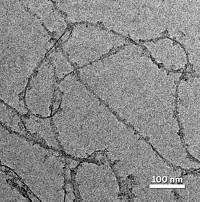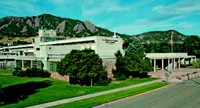Advertisement
Grab your lab coat. Let's get started
Welcome!
Welcome!
Create an account below to get 6 C&EN articles per month, receive newsletters and more - all free.
It seems this is your first time logging in online. Please enter the following information to continue.
As an ACS member you automatically get access to this site. All we need is few more details to create your reading experience.
Not you? Sign in with a different account.
Not you? Sign in with a different account.
ERROR 1
ERROR 1
ERROR 2
ERROR 2
ERROR 2
ERROR 2
ERROR 2
Password and Confirm password must match.
If you have an ACS member number, please enter it here so we can link this account to your membership. (optional)
ERROR 2
ACS values your privacy. By submitting your information, you are gaining access to C&EN and subscribing to our weekly newsletter. We use the information you provide to make your reading experience better, and we will never sell your data to third party members.
Environment
An Environmental Legacy Ends
Impending environmental lab closure generates protest, even while scientists prepare to move on
by Elizabeth K. Wilson
October 22, 2007
| A version of this story appeared in
Volume 85, Issue 43

FOR MORE THAN 50 YEARS, an independent enclave of ecological scientists has thrived within the confines of a government nuclear facility, the Savannah River Site (SRS), studying the chemistries of various nuclear waste products and their interactions with soil and water and keeping tabs on the long-term health of the site's reptiles and amphibians. But this oasis of environmentalism may be drying up, a prospect that has generated a scientific and political maelstrom.
The tiny University of Georgia-managed Savannah River Ecology Laboratory (SREL) has been an unlikely component of the 310-sq-mile SRS in South Carolina, which for decades produced radioactive materials such as plutonium for nuclear weapons and now primarily manages nuclear waste. But the relationship between SREL and SRS is dissolving, now that the Department of Energy, which funded the lab, is ending its regular support for SREL as of June 2008.
The SREL staff has dwindled from 160 in 2005 to less than 40. Perhaps a dozen faculty are wrapping up their projects; their formerly bustling facility is now a scientific ghost town with a custodial staff of one where employees take turns divvying up the mail.
"It's sad situation right now," says Christopher Romanek, an SREL geochemist who is transferring his lab to the University of Georgia (UG), located 130 miles away in Athens.
Scientists, local politicians, and people in communities surrounding SRS, who see SREL as providing invaluable environmental monitoring of SRS, are protesting the closure. They say DOE unfairly pulled the funding rug out from under a world-class lab that helps keep tabs on, among other things, the health of water systems that feed the 350-mile-long Savannah River, which forms the border between South Carolina and Georgia.
"What we provided was open information," says SREL's former director for 10 years, Paul Bertsch.
Without ready access and on-site equipment, he and other SREL scientists say, it will be difficult to study soil samples, plumes of contaminants such as tritium in on-site water systems, or the long-term health of SRS animals and plants. A website to "Save SREL" monitors the situation, along with a list of supportive letters, including one from former president Jimmy Carter.
The House Science & Technology Committee's Investigations & Oversight and Energy & Environment Subcommittees held two hearings in July and August, during which scientists, lab officials, and politicians argued passionately that DOE had used unfair tactics in withdrawing its funding.
DOE maintains that it is merely insisting the lab now compete for funding in an increasingly lean fiscal environment and that it welcomes bids for funding of specific projects it deems "mission critical" for SRS waste cleanup.

DESPITE THE PROTEST, scientists at SREL say the end appears inevitable, and most have made or are making plans for new careers. A half-dozen researchers, like Romanek and geochemist John Seaman, are going to UG; others have found positions elsewhere. Bertsch has taken a position at the University of Kentucky and will be looking at the environmental impacts of manufactured nanomaterials; geochemist Andrew Neal is returning to his native England to work at Rothamsted Research.
SREL was created in 1951 by UG professor Eugene P. Odum, who is often called the founder of modern ecology and who coined the term "ecosystem." His vision was for SREL to continuously assess the effects of SRS nuclear activities on local flora and fauna. Throughout the years, DOE has provided up to $12 million annually to run the lab, a style of governmental support not common today. Over the past several years, funding has decreased, and this past year, the budget was $4 million.
"To some extent the arrangement that existed is a little anachronistic," says David Lee, UG's vice president for research. "It's just not the way most funding goes these days."
Lee, also a former chair of the biochemistry and biophysics department at the University of North Carolina, envisions creating a new facility that's largely off-site, with scientists making trips to SRS for specific projects.
UG and SRS are now in the midst of working out how and what equipment will be transferred to UG and what will remain on-site, says Julie Peterson, a DOE representative at SRS.
The science community believes, however, that without an on-site facility, once-simple tasks such as taking radioactive soil samples will become cumbersome. The samples will have to be carefully transported and managed elsewhere instead of being studied directly and immediately on-site.
In particular, Bertsch says, the ecological studies—the decades-long, daily monitoring of species such as snakes, turtles, and lizards, will likely suffer. The health of such animals was "used as gauge of the overall health of the ecosystems," he says.
Seaman hopes to be able to continue monitoring plumes of tritium contamination in SRS water systems. Tritium, a radioactive hydrogen isotope, is used in nuclear weapons manufacture. Because of its short half-life of 12 years, it needs to be constantly replenished. SRS wants to keep tritium out of creeks that flow into the Savannah River. Seaman is involved in efforts to monitor and treat tritium-contaminated water. Trying to do his research from Athens "will certainly be difficult," he says. "The thing that has made our collaboration work has been constant access."
Neal will continue his studies of iron-reducing bacteria that can reduce and immobilize heavy-metal contaminants such as uranium in soil. "But all the work I was doing on-site—looking at the effects of contaminants on microbial populations—that will close down," he says. "At a larger philosophical level, it's sad because the local community will no longer have the comfort that someone is out there keeping an eye on things."




Join the conversation
Contact the reporter
Submit a Letter to the Editor for publication
Engage with us on Twitter